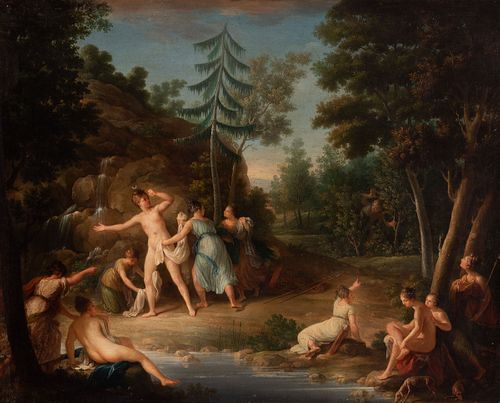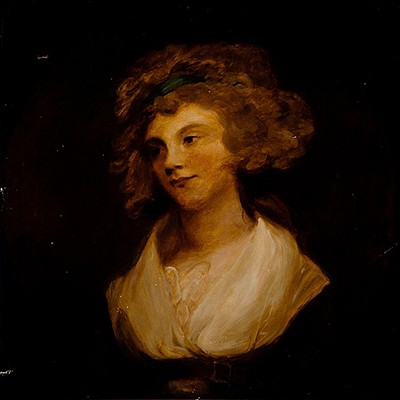French or Spanish school; ca. 1815. "The Bath of Diana". Oil on canvas. Relined.
About Seller
Carrer Aragó 346
Barcelona
Spain
Setdart Subastas was born in 2004 and is currently the first online art auction in Spain with solidity, prestige and reliability guaranteed by our more than 60,000 users. Setdart has a young, dynamic and enterprising team ready to successfully manage the purchase and sale of art works through custom...Read more
Two ways to bid:
- Leave a max absentee bid and the platform will bid on your behalf up to your maximum bid during the live auction.
- Bid live during the auction and your bids will be submitted real-time to the auctioneer.
Bid Increments
| Price | Bid Increment |
|---|---|
| EUR€0 | EUR€10 |
| EUR€200 | EUR€25 |
| EUR€500 | EUR€50 |
| EUR€1,000 | EUR€100 |
| EUR€3,000 | EUR€200 |
| EUR€5,000 | EUR€500 |
| EUR€10,000 | EUR€1,000 |
| EUR€20,000 | EUR€2,000 |
| EUR€50,000 | EUR€5,000 |
About Auction
Nov 25, 2021
Setdart Auction House sofia@setdart.com
- Lot Description
French or Spanish school; ca. 1815. "The Bath of Diana". Oil on canvas. Relined. It has slight repainting. Measurements: 72 x 90 cm; 80,5 x 98 cm (frame). This work represents the scene of Diana's bath, a theme taken from classical mythology and very repeated throughout the history of art since the Renaissance. Thus, we see the classical goddess beside a lake where two of her nymphs are bathing. The best known story related to this scene is that of Diana surprised by Actaeon, narrated by Ovid in his "Metamorphoses". The goddess, devoted to chastity, was bathing in the company of her nymphs in the woods near the Boeotian city of Orcomenus, when the famous hunter Actaeon found her by chance. Fascinated by her beauty, the young man stopped and stared at her nakedness. Diana discovered him and, as punishment, turned him into a deer. She then sent Actaeon's own hounds to kill him, who devoured him. This theme is already represented in ancient art, with examples such as the 5th century B.C. krater called "Artemis killing Actaeon" or the Hellenistic marble reliefs on the same myth preserved in the British Museum. Likewise, in 1684 Marc-Antoine Charpentier set to music a lyrical tragedy entitled "Actaeon". It was also represented by many painters, including Parmigianino, Fontanellato, Titian and Delacroix. Aesthetically the work is reminiscent of the painting of Rafael Tegeo Díaz (Caravaca de la Cruz, Murcia, 1798-Madrid, 1856) who was academically trained at the School of Fine Arts of San Fernando. In 1828 he moved to Rome, thanks to a scholarship that allowed him to study under the guidelines of Benvenuti and Camuzini. His work was characterized by the representation of mythological themes, in which he specialized, although he made another type of painting linked to his work as decoration of the Royal Palace, the Palace of Vista Alegre and the Casino de la Reina. He was also outstanding in the painting of portraits, becoming a painter of camera.
Dimensions:
INV Number:
72 x 90 cm; 80,5 x 98 cm (frame).
35256458 - Shipping Info
-
In-house shipping available. Please inquire at admin@setdart.com.
-
- Buyer's Premium



 EUR
EUR CAD
CAD AUD
AUD GBP
GBP MXN
MXN HKD
HKD CNY
CNY MYR
MYR SEK
SEK SGD
SGD CHF
CHF THB
THB

















